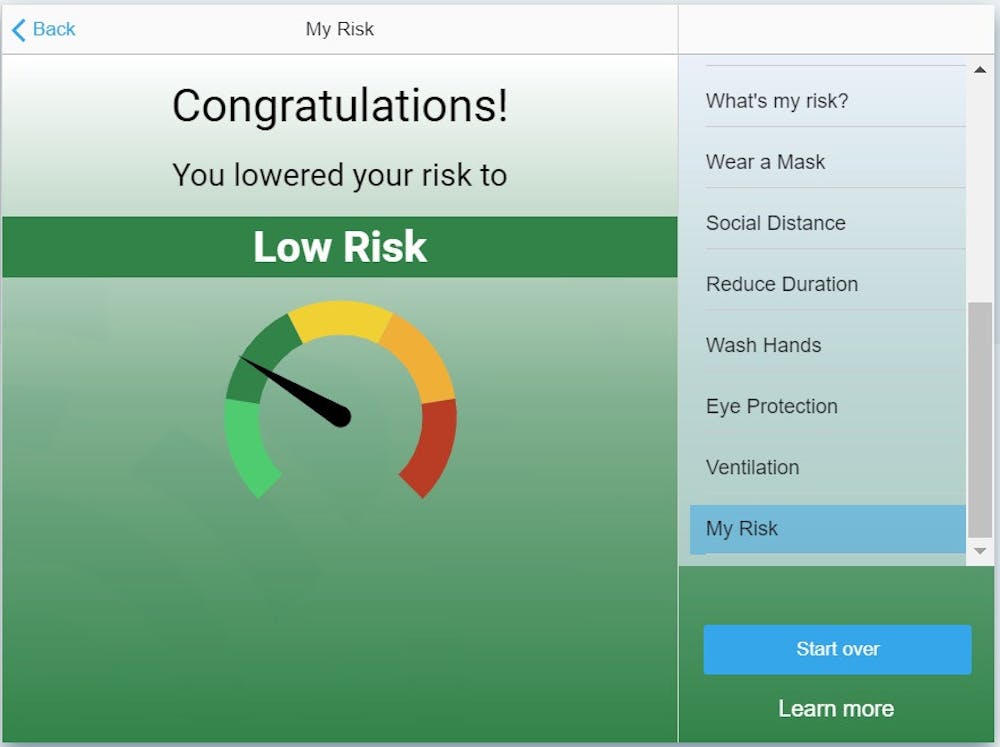As the threat of COVID-19 infection continues to loom over everyday activities, two University researchers created a free and accessible app called MyCOVIDRisk to help people quantify their risk of infection from specific activities and use that information to mitigate risk through their behavior.
“We’ve been repeating this mantra of masking up and social distancing, but it doesn’t really become real to people until they understand what’s the risk of exactly what they are doing or plan to do,” said Elizabeth Goldberg MS’17, associate professor of emergency medicine and one of the app’s creators.
The researchers chose to use an application to address this problem because of a rise in cases among those under 40, who are known to use digital technology, she added.
The app has already garnered more than 600,000 users, according to Megan Ranney MPH’10, associate professor of emergency medicine, director of the Brown-Lifespan Center for Digital Health and the app’s other creator.
“Based on our current knowledge on how the virus is transmitted, (the app) is a pretty accurate prediction of the likelihood of catching COVID-19 from a given activity in a given location,” Ranney said.
MyCOVIDRisk asks the user about the details of an activity — such as whether masks will be worn and the nature of an activity — and runs the inputs through a model to give the user a risk score. The most important factor the app considers is the prevalence of COVID-19 in a community and the number of people at an event. The app then factors in whether the event is indoors or outdoors, Ranney said.
The app was also designed to be non-intrusive. “We purposefully decided to not ask questions involving personally identifying information. We want there to be no barrier to using it,” Ranney said.
With the assistance of scientists from across the world, who contributed to the creation of the prediction model, the team developed the app quickly in anticipation of a rise in cases in the fall, she said.
“The app developed by Brown (researchers) is really helpful for planning purposes” and “fills a void for information and for quality risk reduction,” said Thomas Scherr, a research assistant professor at Vanderbilt University.
Scherr had helped create a different COVID-19 risk assessment app at Vanderbilt. MyCOVIDRisk “works hand in hand with what we’ve developed,” Scherr added.
The researchers hope to expand the reach of the MyCOVIDRisk app. Currently, it is only available on the website, but it will be released through Apple and Android stores in a couple of weeks, Goldberg said.
They also hope to increase accessibility to the app by making it available in multiple languages. For example, “here in Rhode Island, it’s important to have it translated into languages of local minority communities” such as Portuguese and Cape Verdean, Ranney said.
The team looks to expand the app globally and refine their algorithm as new scientific knowledge develops, she added.

Jared is a Senior Staff Writer for Science and Research. He is a senior from Albuquerque, New Mexico studying physiology and biotechnology. Outside of The Herald he likes to fish, ride bikes and research the role of metals in human health and disease.





